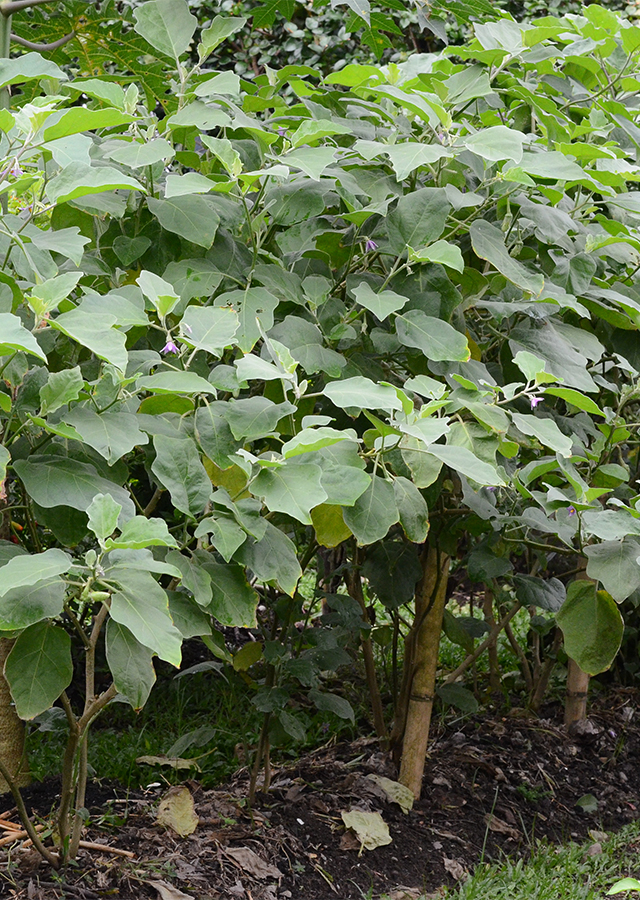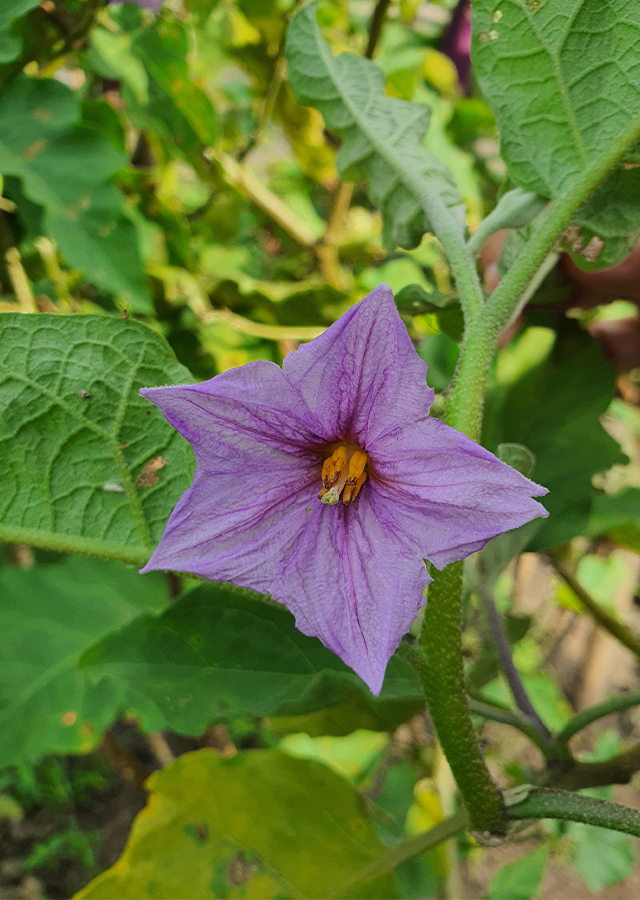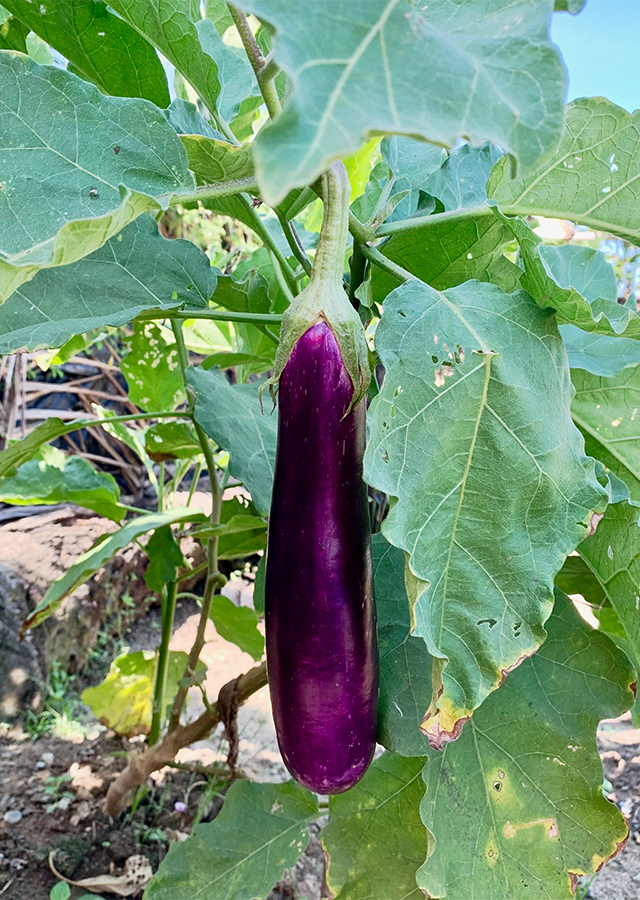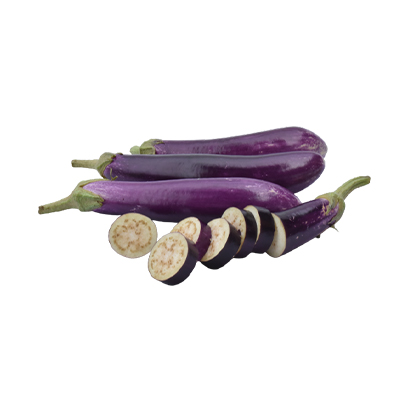Eggplant
Solanum melongena L.
Solanaceae
Location in our garden
Principal



Synonym
Melongena esculenta (Dunal) Grecescu
Melongena incurva Mill.
Melongena ovata Mill.
Habitus
Shrubs. An annual herb to short-lived perennial sub-shrub, growing 60-150 cm tall.
Part Used
Leaves
Fruit
Roots
Growing Requirements
Full Sunshine
Habitat
Terrestrial
Overview
The centre origin of eggplant is still controversial and debatable. The most commonly hypothesized region for the domestication of eggplant is India, however China has an equality old written record of eggplant use dating about 2,000 years ago. The plants is often cultivated for its edible fruit.
Vernacular Names
Qie zi (Chinese), Aubergine (French/German/Dutch), Begun (India), Daimaru nasu (Japanese), Kaji (Korean), Talong (Tagalog-Philippines), Makhua chan (Thai).
Agroecology
Depending on varieties, eggplant is adaptable to a tropical and cool temperate climate. It grows best between 20 °C to 35 °C. Temperature below 20 °C and above 40 °C retards growth. It thrives in full sun and ample water. It requires fertile, rich, well drained soil, and abhors waterlogged and strongly acidic soils, a pH in the range 5.5 to 6.8.
Morphology
- Roots - long taproot.
- Stems - branched, prickly, erect, half-woody.
- Leaves - alternate, 10-25 cm long, simple, petiolate (2-4.5 cm long), leaf blade ovate to oblong-ovate, sometimes with a few fine prickles on both surfaces, base obliquely cordate, margin sinuate-lobed.
- Flowers - mostly solitary flowers, rarely reduced racemens, andromonoecious, 3-4 cm in diameter, purplish in colour.
- Fruits - fleshy, smooth, purple, up to 25 cm long, extremely variable in shape (round, oblong, or cylindric).
- Seeds - numerous, 3-4 mm long, lenticular to reniform, flattened, pale yellow to light brown.
Cultivation
- Propagation is done by seeds.
- Seeds should be extracted from fully ripe fruits and should be dried for 48 hours, or longer if the conditions are not optimum.
- The seeds are sown in trays or seedbed, and seedlings are transplanted in small pots or bags (10 cm in diameter) 2-3 weeks later when the first leaf appears. The seedling are kept in the nursery till they have 5-7 leaves.
Chemical Constituents
Phenolic, tannins, flavonoid, glycoalkaloids, steroids, saponins, trigonelline, choline, stigmasterol, stigmasterol-ß-D-glucoside, ß- sitosterol-ß-D-glucoside, dioscin, protodioscin, and methyl protodioscin.
Traditional Medicinal Uses
- The fruits help to lower blood cholesterol levels and is suitable as part of diet to help regulate high blood pressure.
- Eggplant is also ascribed narcotic, anti-asthmatic and anti-rheumatic properties.
- The fruit is antihaemorrhoidal and hypotensive.
- The warm fruit paste is applied to painful joints.
- The ashes of the peduncle are used in the treatment of intestinal haemorrrhages, piles, toothache.
- A decoction of root is antiasthmatic, astringent, and general stimulant. It is made into a powder and applied both internally and externally as a remedy for bleeding.
- The juice of the root is used in the treatment of otitis and toothache.



